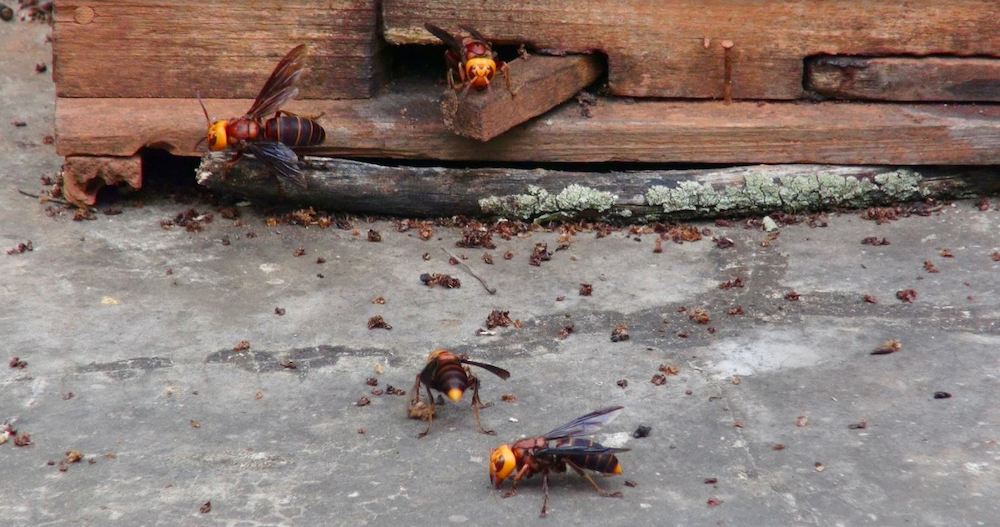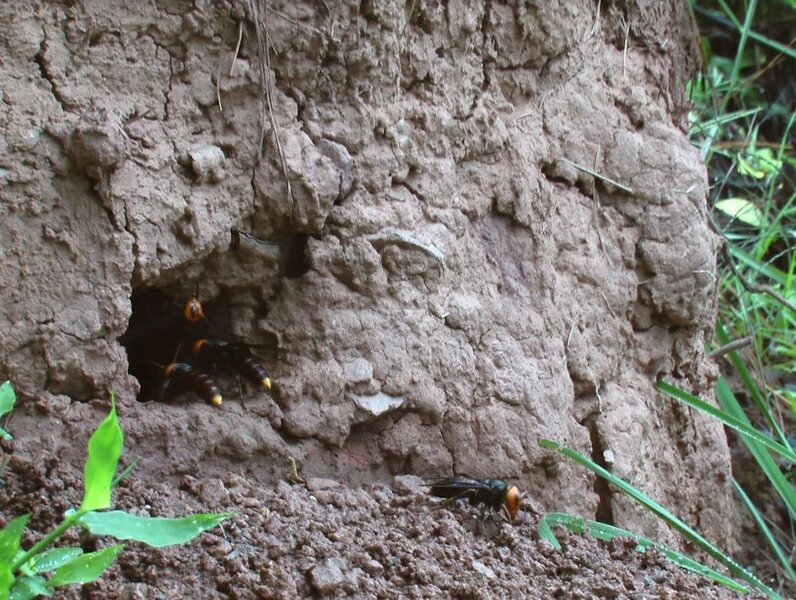Create a free profile to get unlimited access to exclusive videos, sweepstakes, and more!
Pheromone traps turn murder hornets into murdered hornets
Good thing we're not so easily manipulated, right? RIGHT?

It was the height of the pandemic when we got hit with a major plot twist. Asian giant hornets, commonly referred to as murder hornets, had made their way to the United States. It’s a plotline which didn’t really pay off, fortunately. The giant hornets, known by their scientific name Vespa mandarinia, haven’t really grabbed a foothold, at least not yet, but studies suggest they could spread across western North America, and they’re already a considerable challenge in other parts of the world.
Asian giant hornets present a few unique challenges, owing mostly to their large size. Their stingers are so long they can get through the protective clothing that beekeepers wear, they deliver a larger dose than you’d get from more common bees and wasps, and the sting is painful. The good news, for humans at least, is they aren’t typically super aggressive toward people. They could, however, present an additional pressure for honeybees which are already challenged by pesticides and climate change.
With that in mind, scientists are looking for novel ways of controlling populations of invasive giant hornets and have come up with something which appears to work incredibly well. Scientists are using the hornets’ own sex drives against them. James C. Nieh from the Division of Biological Sciences at the University of California San Diego, and colleagues, identified the chemical components of sex pheromones released by virgin queens and used them to build traps. The findings were published in the journal Current Biology.
“We rubbed paper strips on different parts of their bodies and found two specific regions, the fifth and sixth intersegmental sternal glands, which work. When you put the strips in a cage with males, they go crazy,” Nieh told SYFY WIRE.
Males of the species approach the paper strips covered in natural pheromones with great interest, but things got interesting when there was more than one male in the cage. If a male had already approached the chemical covered paper strip, another male might mistake it for a queen ready to mate and attempt to mate with it. The combination of chemical components and recognizable morphology seems to be the secret code for trapping males.
Harvesting natural pheromones from queens isn’t really scalable, so scientists needed to identify which chemical were doing the work. They used solvents to remove the pheromone chemicals from the paper strips and used gas chromatography-mass spectrometry to identify them. In short, they run the chemicals through a machine which ionizes them and bounces them up against a list of chemicals which have already been identified. From there, they get those chemicals off the shelf and run them through the machine to confirm the same pattern presents. Just like that, the team had identified the major components of hornet booty calls.
They applied the chemical cocktail to sticky traps similar to those used to catch rodents and placed them about 15 meters from the entrance to a hornets’ nest. Males were attracted to the traps but didn’t land until scientists added a visual component.
“We had to use a dummy male in the traps. Initially, the males would show interest but none of them would land, placing a dummy male helped them do that. We think the dummy looks a lot like the female of the species. So, now the trap looks like her and smells like her,” Nieh said.
Traps were placed relatively close to the nest entrance because mating typically happens close to the nest. The tests were successful at trapping thousands of male giant hornets with this setup. One limitation, of course, is you have to already be aware of the nest location. It’s possible, however, that traps might work across larger distances.
“It’s in the interest of the species, like all species, to avoid inbreeding. If they were only to emerge and mate with their brothers that would be pretty bad for the species. So, we think males can be attracted from long distances,” Nieh said.
Future experiments planned for this fall are planned to try traps at greater distances. They’re also looking for some additional chemical components which haven’t yet been identified.
“The natural pheromones are still more effective, so there’s some compound we’re missing and we’re hoping to figure out what those are,” Nieh said.
It’s also possible that males emit some sex pheromones to attract the queen. If those could be identified, similar traps could be crafted which would be much more effective at population control. In the meantime, the chemicals identified in the paper are readily available off the shelf and could be deployed to limit the population of breeding male.
If giant hornets ever decide to pick up the thread and come for us while our guard is down, we’re ready for them.



























